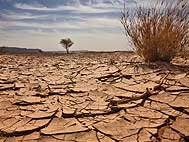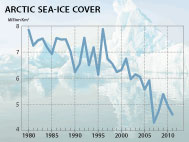| SEARCH |
-

Nov 17, 2015
Reflections on a three-decade legacy
The International Geosphere-Biosphere Programme (IGBP) will come to a close at t...
-
Nov 17, 2015
Use of and access to content on this website
Text and images produced by IGBP in house are free to use with appropriate credi...
-
Nov 12, 2015
Bella Gaia performance and panel discussion to mark IGBP's closure
A musical performance by Bella Gaia will celebrate the achievements and legacy o...
-

Towards Future Earth:
evolution or revolution?
During its three decades of existence, the International Geosphere-Biosphere Pro...
-
A personal note on IGBP and the social sciences
Humans are an integral component of the Earth system as conceptualised by IGBP. João Morais recalls key milestones in IGBP’s engagement with the social sciences and offers some words of advice for Future Earth.
-
IGBP and Earth observation:
a co-evolution
The iconic images of Earth beamed back by the earliest spacecraft helped to galvanise interest in our planet’s environment. The subsequent evolution and development of satellites for Earth observation has been intricately linked with that of IGBP and other global-change research programmes, write Jack Kaye and Cat Downy .
-
Deltas at risk
Around 500 million people worldwide live on deltas, but many of the world's deltas are sinking due ...
-
Climate change: the state of the science
A new data visualization released on the first day of the plenary negotiations at the UNFCCC’s clima...
-
Climate Change:
the State of the Science
Videos now online from the Stockholm public forum to mark the launch of the IPCC's climate report, 2...

Global Ocean Ecosystem Dynamics
GLOBEC, a study of Global Ocean Ecosystem Dynamics, was initiated in 1990 by the Scientific Committee on Oceanic Research and the Intergovernmental Oceanographic Commission of UNESCO, and incorporated into the IGBP Core Element structure in 1995.
Goal and Objectives
The GLOBEC Science Plan was published in 1997, which set out the GLOBEC goal as:
“To advance our understanding of the structure and functioning of the global ocean ecosystem, its major subsystems, and its response to physical forcing so that a capability can be developed to forecast the responses of the marine ecosystem to global change”.
GLOBEC considered “global change” in a broad sense to encompass the gradual processes of climate change as a result of greenhouse warming and their impacts on marine systems, as well as those shorter-term changes resulting from anthropogenic pressures such as population growth in coastal areas, increased pollution, overfishing, changing fishing practices and changing human uses of the seas.
- Objective 1: To better understand how multiscale physical
environmental processes force large-scale
changes in marine ecosystems - Objective 2: To determine the relationships between structure
and dynamics in a variety of oceanic systems
which typify significant components of the global
ocean ecosystem, with emphasis on trophodynamic
pathways, their variability and the role of nutrition
quality in the food web - Objective 3: To determine the impacts of global change on
stock dynamics using coupled physical,
biological and chemical models linked to
appropriate observation systems and to
develop the capability to predict future impacts
Throughout GLOBEC the programme was managed by a Scientific Steering Committee and GLOBEC research was organised around four foci. The work was initially developed within four Regional Programmes and in 2004 two additional programmes began their research activities. A final regional programme, ICED, grew out of Southern Ocean GLOBEC in the final years of the programme.
Now that the project has ended, many of the continuing activities and
outstanding scientific questions are being taken forward by IMBER.
Legacy
Marine ecosystems and climate change
Oxford University Press (2010) Barange M, Field J G, Harris R H, Hofmann E E, Perry R I and Werner C (eds) 464 pp.
IGBP closed at the end of 2015. This website is no longer updated.
-

Global Change Magazine No. 84
This final issue of the magazine takes stock of IGBP’s scientific and institutional accomplishments as well as its contributions to policy and capacity building. It features interviews of several past...
-

Global Change Magazine No. 83
This issue features a special section on carbon. You can read about peak greenhouse-gas emissions in China, the mitigation of black carbon emissions and the effect of the 2010-2011 La Niña event on gl...
-
INTERGOVERNMENTAL PANEL ON CLIMATE CHANGE:
How green is my future?
UN panel foresees big growth in renewable energy, but policies will dictate just how big.
-
UK:
'The Anthropocene: a new epoch of geological time?'
Royal Society, Philosphical Transactions A




















